Healthy and safe cookware is important in the pursuit of a healthy and safe kitchen environment. The pots we use can significantly impact the quality of our meals and our overall well-being. With so many options available, it can be challenging to determine which type of pot is best suited for your cooking needs. In this comprehensive guide, we will explore various types of cookware, highlighting their respective strengths and weaknesses. By understanding these factors, you will be empowered to make an informed decision and choose healthy and safe cookware that prioritizes health and safety in your kitchen.
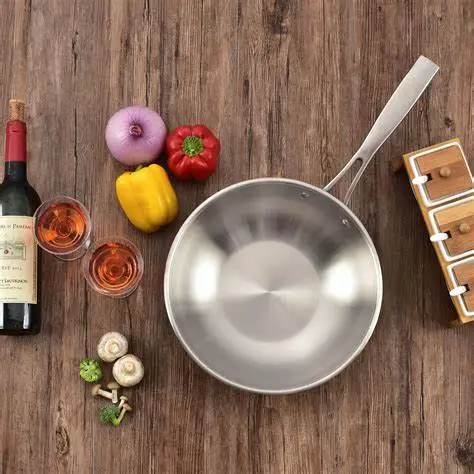
Non-Stick Cookware
It is advisable to choose high-quality non-stick cookware that is PFOA-free and follow proper usage guidelines to minimize any potential risks. Non-stick cookware has gained popularity due to its convenience and easy-to-clean nature. It typically features a non-stick coating that prevents food from sticking to the surface. The primary materials used are aluminum or stainless steel with a non-stick coating like Teflon. While non-stick cookware offers benefits such as easy food release and reduced oil usage, it is important to be aware of its drawbacks. Some potential weaknesses include the possibility of chemical leaching at high temperatures, vulnerability to scratches and peeling, and limited high-heat cooking capabilities.
Opt for high-quality non-stick cookware with a durable coating and ensure it is used within its recommended temperature limits. Avoid using metal utensils and abrasive cleaning tools to prevent scratching.
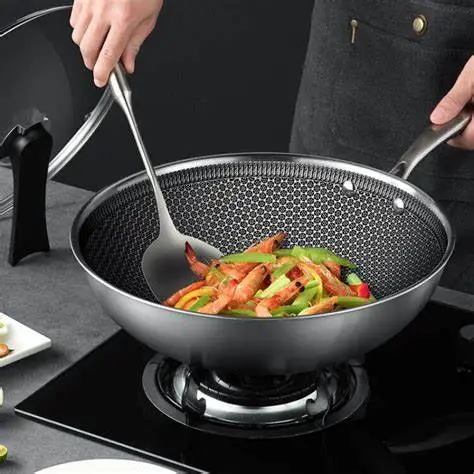
Stainless Steel Cookware
Advantages of Stainless Steel Pots:
- Durata: Stainless steel pots are highly durable and resistant to scratches, dents, and corrosion. They can withstand high temperatures and maintain their structural integrity over time, making them a long-lasting investment for your kitchen.
- Non-reactive: Stainless steel is non-reactive, meaning it does not interact with acidic or alkaline foods. This property ensures that the taste and color of your food remain unaffected, making stainless steel pots a versatile choice for various cooking applications.
- Even heat distribution: Stainless steel pots often feature an aluminum or copper core or base, which enhances heat conductivity and ensures even heat distribution across the cooking surface. This feature helps prevent hot spots and promotes consistent cooking results.
- Non-toxic: Stainless steel is considered a safe and non-toxic material for cookware. It does not leach harmful chemicals or metals into your food, providing peace of mind regarding the safety of your meals.
- Facile da pulire: Stainless steel pots are generally easy to clean due to their smooth, non-porous surface. They are compatible with most cleaning methods, including dishwasher use, making maintenance hassle-free.
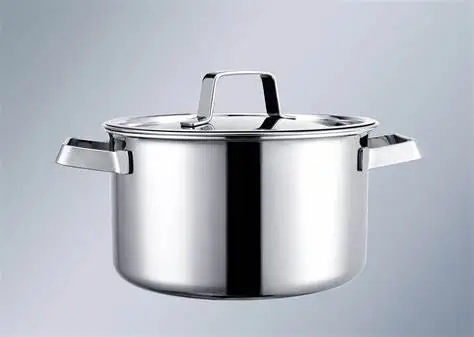
Disadvantages of Stainless Steel Pots:
- Poor heat retention: While stainless steel pots distribute heat evenly, they do not retain heat as well as materials like cast iron. This can result in faster heat loss when cooking, requiring adjustments in cooking techniques and temperature control.
- Uneven heat distribution in lower-quality options: Lower-quality stainless steel pots may have uneven heat distribution, leading to hot spots or food sticking to the surface. Investing in higher-quality stainless steel pots with aluminum or copper cores can help mitigate this issue.
- Higher price range: Compared to some other types of cookware materials, stainless steel pots can be relatively more expensive. However, the durability and longevity they offer can offset the initial investment.
Suggestions for Using Stainless Steel Pots:
- Look for pots with an aluminum or copper core: Opt for stainless steel pots with an aluminum or copper core or base, as this improves heat conductivity and ensures more even heat distribution.
- Use lower heat settings: Stainless steel pots tend to heat up quickly, so using lower heat settings during cooking can help prevent food from sticking and burning. Additionally, it can help conserve energy.
- Preheat the pot before adding ingredients: Preheating stainless steel pots before adding ingredients can promote even heat distribution and prevent food from sticking to the surface. You can preheat the pot by placing it on the stove over low to medium heat for a few minutes before adding oil or ingredients.
- Use cooking techniques that benefit from stainless steel’s quick heat response: Stainless steel pots are well-suited for cooking techniques that require precise temperature control and quick heat response, such as sautéing, searing, and deglazing.
- Follow proper cleaning and maintenance: To maintain the longevity of your stainless steel pots, follow the manufacturer’s cleaning instructions. Avoid using abrasive cleaners or harsh scrubbers that can damage the surface. If stubborn stains or discoloration occur, you can use specialized stainless steel cleaners or natural remedies like vinegar and baking soda for gentle cleaning.
Cast Iron Cookware
Advantages of Cast Iron Pots:
- Excellent heat retention: Cast iron pots retain heat exceptionally well. They retain heat well after being heated, enabling consistent cooking and keeping meals warm for a long time. They are therefore perfect for foods like stews and braises that call for low-and-steady heat.
- Superior heat distribution: Cast iron uniformly disperses heat over its surface, reducing hot spots and guaranteeing reliable cooking outcomes. For searing and browning meat, this quality is especially advantageous.
- Versatilità: Cast iron pots are versatile and can be used on various heat sources, such as ovens, grills, and campfires. They work well with many kinds of cooking methods, from baking and roasting to frying.
- Natural non-stick surface: Cast iron develops a natural non-stick surface over time with adequate seasoning and upkeep. The smooth, non-porous cooking surface that is produced by this seasoning reduces the need for extra oil or fat during cooking and facilitates food release.
- Durability: Cast iron pots can survive high heat and frequent usage and are highly robust. They are a long-lasting investment for your kitchen because they are resistant to dents, scratches, and warping.
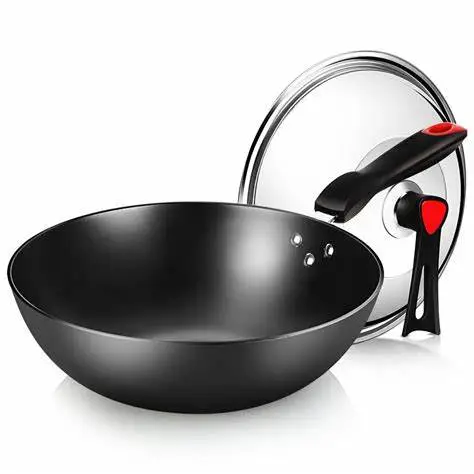
Disadvantages of Cast Iron Pots:
- Heavyweight: Cast iron pots are considerably heavy compared to other cookware materials. This weight can make them challenging to handle, especially for individuals with limited strength or mobility.
- Requires regular maintenance: Cast iron pots require regular maintenance to maintain their seasoning and prevent rust. They should be hand-washed with minimal soap, thoroughly dried, and lightly coated with oil after each use to prevent moisture from causing rust.
- Prone to rusting: If not properly cared for, cast iron pots can rust. Exposure to moisture and acidic foods can strip away the seasoning and lead to rust formation. However, with proper seasoning and maintenance, rusting can be prevented.
- Slow to heat up: Cast iron takes longer to heat up compared to other materials due to its high density. Preheating the pot before adding ingredients is essential for efficient cooking.
- Not suitable for acidic foods: Cast iron is reactive with acidic foods, which can cause a metallic taste and potentially leach iron into the food. It is best to avoid prolonged cooking of highly acidic dishes in cast iron pots.
Suggestions for Using Cast Iron Pots:
- Season the pot: Properly seasoning the cast iron pot creates a natural non-stick surface and helps prevent rust. To season, coat the pot with a thin layer of oil and heat it in the oven at a specific temperature and duration, following the manufacturer’s instructions.
- Preheat the pot: Preheating the cast iron pot before adding ingredients ensures even cooking and prevents food from sticking. Place the empty pot on low to medium heat for a few minutes to allow it to heat up gradually.
- Use heat-resistant utensils: When cooking with cast iron, use heat-resistant utensils such as wooden or silicone tools to avoid scratching the seasoned surface.
- Hand wash and dry immediately: Avoid using harsh detergents or abrasive scrubbers on cast iron pots, as they can strip away the seasoning. Instead, hand wash the pot with minimal soap, rinse thoroughly, and dry it immediately to prevent rust formation.
- Re-season as needed: Over time, the seasoning on cast iron pots may wear off. If you notice food sticking or signs of rust, it’s time to re-season the pot. Follow the seasoning process mentioned earlier to restore its non-stick properties.
Ceramic Cookware
Advantages of Ceramic Cookware:
- Non-reactive surface: Ceramic cookware is non-reactive, meaning it does not interact with acidic or alkaline foods. This property ensures that the taste, color, and nutritional value of your food remain unaffected during cooking.
- Even heat distribution: Ceramic cookware typically provides even heat distribution, resulting in consistent cooking results and reducing the likelihood of hot spots.
- Non-stick properties: Many ceramic cookware products feature a non-stick surface, which can make cooking and cleaning easier. This non-stick coating minimizes the need for excessive oil or fat when cooking and allows for food to be released more easily.
- Facile da pulire: Ceramic cookware is generally easy to clean due to its smooth surface. Food residues and stains can be easily wiped off or washed away, making maintenance convenient.
- Aesthetic appeal: Ceramic cookware often comes in a variety of vibrant colors and designs, adding a touch of style to your kitchen.
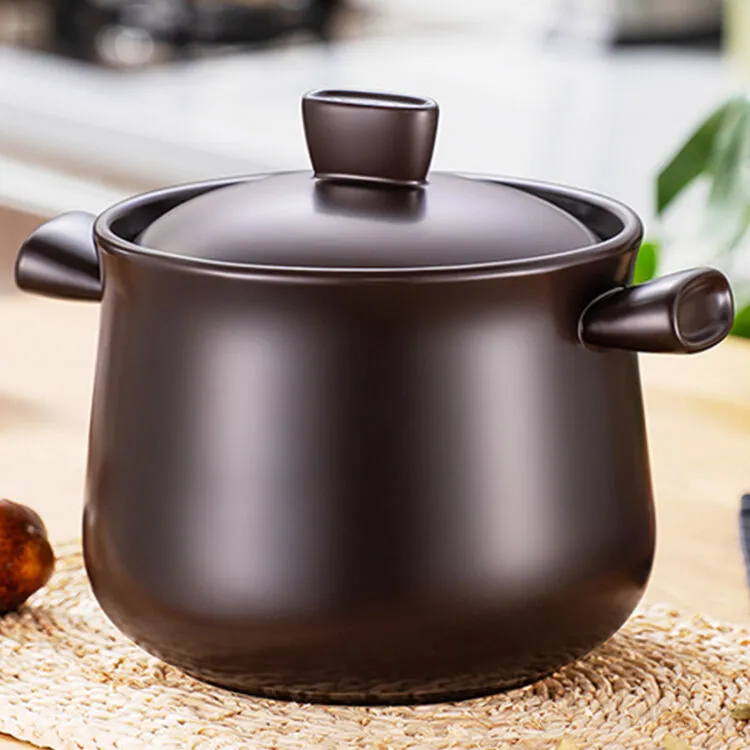
Disadvantages of Ceramic Cookware:
- Fragility: Ceramic cookware is more fragile than other materials like cast iron or stainless steel. It is susceptible to chipping, cracking, or breaking if mishandled or subjected to rapid temperature changes.
- Limited heat resistance: While ceramic cookware can handle moderate to high heat, it may not tolerate extreme temperature changes well. Sudden shifts from hot to cold or vice versa can cause thermal shock and potentially lead to cracks or breakage.
- Careful handling required: Due to its fragility, ceramic cookware requires careful handling to prevent damage. Extra caution should be taken when stacking or storing the cookware to avoid chipping or scratching the surface.
- Longevity of non-stick coating: The non-stick coating on ceramic cookware can gradually wear off over time, especially with regular use and improper cleaning methods. This may reduce its effectiveness and require the cookware to be replaced or re-coated.
- Price range: Ceramic cookware can vary in price, but high-quality options with durable coatings may be more expensive compared to lower-quality alternatives.
Suggestions for Using Ceramic Cookware:
- Use gentle heat: Ceramic cookware can withstand moderate to high heat, but it’s recommended to use lower to medium heat settings to avoid potential damage. Excessive heat can cause the non-stick coating to degrade or the ceramic to crack.
- Avoid drastic temperature changes: Avoid exposing ceramic cookware to drastic temperature changes, such as placing a hot pan under cold water or transferring it directly from the refrigerator to the stovetop. Allow the cookware to cool down gradually or reach room temperature before subjecting it to extreme temperature variations.
- Use plastic or wooden utensils: To prevent scratching or damaging the non-stick coating, use plastic, silicone, or wooden utensils when cooking with ceramic cookware.
- Hand wash recommended: While some ceramic cookware may be dishwasher-safe, hand washing is generally recommended to prolong their lifespan. Use mild dish soap and a non-abrasive sponge or cloth to clean the cookware.
- Store carefully: Store ceramic cookware with care, ensuring that it is placed in a way that minimizes contact with other cookware to prevent chipping or scratching.
Aluminum Pots
Aluminum alloy pots and pans are processed and molded in two main categories, deformed aluminum alloy sheet pressing (deep drawing, spinning, etc.) molding, casting aluminum alloy casting (die casting, casting) molding. The most common aluminum alloy used for deep drawing is aluminum manganese (3XXX) alloy, 3003 or 3103A are common types. Casting type of alloy, used for die casting of the most common is the silicon content of 10-13% of the ZL102 alloy; used for casting is generally not a specific grade, generally is less than 5% of the silicon element.
Advantages of Aluminum Pots:
- Excellent heat conductivity: Aluminum is an excellent conductor of heat, allowing for quick and even heat distribution throughout the pot. This feature ensures that your food cooks evenly and reduces the chances of hot spots.
- Leggero: Aluminum pots are lightweight, making them easy to handle and maneuver in the kitchen. This feature is particularly beneficial for individuals who may have difficulty lifting heavier cookware.
- Affordable: Aluminum pots are generally more affordable compared to other types of cookware materials like stainless steel or copper. This affordability makes them accessible to a wider range of budgets.
- Quick heating and cooling: Aluminum pots heat up rapidly and cool down quickly. This characteristic is advantageous when you want to adjust the cooking temperature promptly or when you need to cool down the pot after cooking.
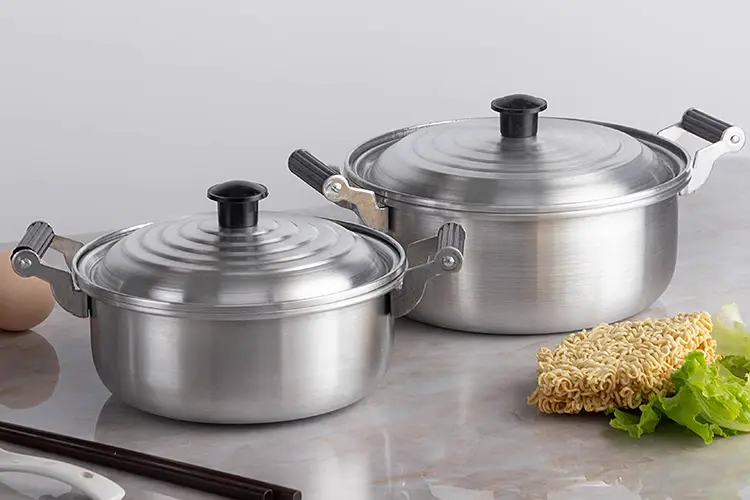
Disadvantages of Aluminum Pots:
- Reactive with acidic and alkaline foods: Aluminum is a reactive metal, and it can react with acidic or alkaline foods, potentially causing a metallic taste and discoloration. This reactivity can also lead to the leaching of aluminum into the food, especially when cooking with highly acidic ingredients.
- Prone to warping and denting: Aluminum pots can be more susceptible to warping or denting compared to other materials. They may become misshapen if exposed to high heat or subjected to rough handling.
- Not suitable for induction cooktops: Aluminum is not magnetic, which means it does not work on induction cooktops unless it has a magnetic base or is layered with a magnetic material.
Suggestions for Using Aluminum Pots:
- Use with caution when cooking acidic foods: To minimize the risk of aluminum leaching into your food, avoid cooking highly acidic or alkaline dishes in aluminum pots for extended periods. If you choose to cook such recipes, consider using a stainless steel or ceramic-coated aluminum pot instead. By the way, when cooking food with aluminum foil, it is also important to pay attention to these potential hazards.
- Avoid using metal utensils: Aluminum pots can scratch easily, so it is advisable to use wooden, silicone, or plastic utensils to prevent damaging the non-stick or natural oxide layer of the pot’s surface.
- Consider anodized aluminum: Anodized aluminum pots have been treated with an electrochemical process to create a harder surface that is more resistant to scratches and less reactive with food. They are a safer alternative to regular aluminum pots, especially when it comes to cooking acidic dishes.
- Hand wash and dry immediately: Avoid using the dishwasher for cleaning aluminum pots, as harsh detergents and high heat can damage the finish. Instead, hand wash the pots using a mild detergent and non-abrasive sponge. After washing, dry the pots thoroughly to prevent water spots or potential corrosion.
- Use on appropriate cooktops: Aluminum pots work well on gas and electric stovetops due to their excellent heat conductivity. However, they are not compatible with induction cooktops unless they have a magnetic base or are layered with a magnetic material.
Summary of Healthy and Safe Cookware:
- Non-stick cookware offers convenience but requires careful usage and high-quality coatings to avoid potential health risks.
- Stainless steel cookware is durable, non-toxic, and offers even heat distribution and longevity.
- Cast iron cookware provides exceptional heat retention and versatility but requires proper seasoning and maintenance.
- Copper cookware offers excellent heat conductivity but can react with acidic foods, so look for copper pots with a protective lining.
- Ceramic cookware is non-reactive and distributes heat evenly but requires careful handling to prevent breakage.
- Aluminum pots offer excellent heat conductivity and are lightweight and affordable, but they can react with acidic or alkaline foods and require careful maintenance to prevent oxidation.
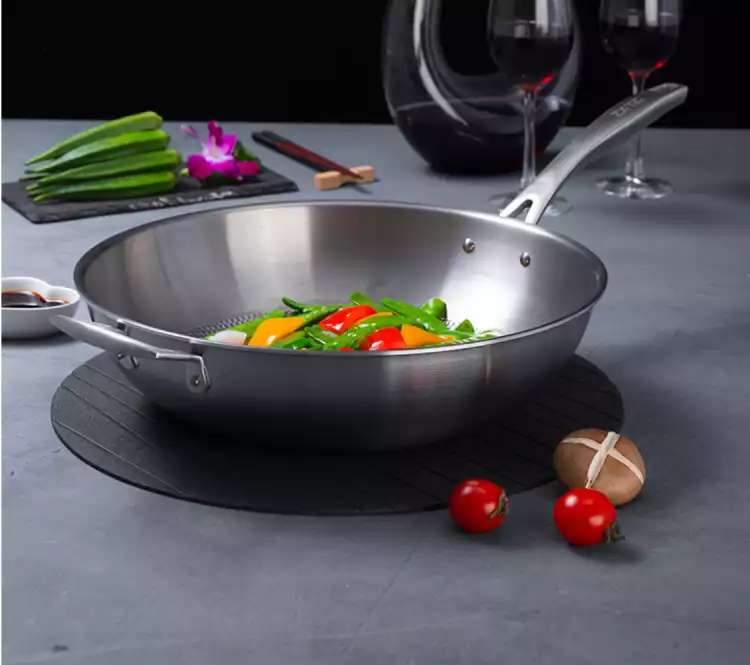
Different Uses of Each Type of Pot During Cooking
- Non-Stick Pots: Non-stick pots are appropriate for foods like eggs, pancakes, and sautéed vegetables that call for delicate cooking or low-fat cooking. They are also perfect for dishes like rice or pasta that are easily sticky.
- Pots made of stainless steel: These pots are adaptable and suitable for a variety of dishes. They work well for steaming vegetables, boiling pasta or potatoes, simmering soups and sauces, and browning meat.
- Cast iron pans: Cast iron pots work well for stews, braises, and roasts and other foods that benefit from slow, uniform heat. They work well for baking cornbread and deep-dish pizzas as well as searing or charring meats.
- Ceramic cookware:Casseroles, baked pasta dishes, and stews that are cooked slowly work well in ceramic pots because they distribute heat evenly and gently. They are perfect for cooking and serving from the oven to the table.
- Aluminum pans: Aluminum pots are adaptable and useful for a range of cooking tasks. They work well for bringing water to a boil, creating stocks, and preparing soups or sauces. Additionally, they work well for stir-fries and sautés and other foods that demand quick and equal heating.
Ultimately, the best pot for you depends on your cooking needs, preferences, and concerns. Consider factors such as heat conductivity, durability, ease of cleaning, non-toxicity, and compatibility with your cooktop. Stainless steel, cast iron, and ceramic cookware are generally considered healthy and safe cookware. By making an informed decision and choosing the healthy and safe cookware, you can enhance your cooking experience while prioritizing your well-being in the kitchen. Remember to follow proper usage and care instructions for your chosen healthy and safe cookware to maintain its safety and longevity.
